Table of Contents
ToggleKeeping a clean home can feel like a never-ending battle, but what if a simple vacuuming schedule could be your secret weapon? Picture this: a tidy living space that doesn’t resemble a scene from a dust bunny horror movie. With just a little planning, you can transform your cleaning routine from chaotic to calm, leaving you more time for the things you love—like binge-watching your favorite series or perfecting your cookie recipe.
Importance Of A Vacuuming Schedule
Establishing a vacuuming schedule enhances home cleanliness. Regular vacuuming removes dust, dirt, and allergens from carpets and floors, improving indoor air quality. Allergies may worsen without consistent cleaning, impacting well-being and comfort.
Creating a timetable for vacuuming simplifies the cleaning process. Assigning specific days for vacuuming different rooms helps maintain organization. A structured schedule prevents procrastination, ensuring someone addresses neglected areas before they become overwhelming.
Efficiency increases with routine. When she vacuums at the same times each week, she reduces decision fatigue, making cleaning feel less daunting. This habit often leads to a deeper overall clean, as surfaces become free from accumulated debris.
Consistency keeps pet hair and other debris under control. A vacuuming schedule helps manage shedding, especially in homes with furry companions. Regular cleaning minimizes unpleasant odors and enhances overall aesthetics.
Time management improves when someone establishes a vacuuming routine. Allocating specific days reduces clutter and boosts productivity. It becomes easier to enjoy a tidy home and dedicate time to other leisure activities, such as cooking or hosting friends.
Tracking the frequency of vacuuming promotes accountability. Regular check-ins on the schedule encourage maintaining cleanliness and motivate family cooperation. It fosters a collaborative effort in household care, creating a shared responsibility that benefits everyone.
Ultimately, a vacuuming schedule contributes to a healthier, more organized living space while freeing up time for enjoyable activities.
Factors To Consider In Your Vacuuming Schedule
Creating an effective vacuuming schedule requires careful consideration of several factors. These factors help determine how frequently and when to vacuum various areas in the home.
Floor Type
Different floor types require varying vacuuming approaches. Hard surfaces like tile and hardwood may need less frequent vacuuming compared to carpets, which trap dirt and allergens. For instance, carpeted areas often benefit from vacuuming two to three times a week to maintain cleanliness. Tile and hardwood may only require weekly attention. Recognizing the floor type helps prioritize vacuuming tasks and ensures that appropriate techniques and attachments are used. Utilizing specific vacuum settings for each floor type enhances results and extends the lifespan of flooring.
Foot Traffic
Foot traffic levels influence vacuuming frequency significantly. High-traffic areas, such as hallways and living rooms, accumulate dirt and debris quickly, needing attention every few days. Conversely, low-traffic zones, like guest rooms, may only need vacuuming every two weeks. Monitoring the family’s daily routines helps identify which areas get the most use. Keeping track of foot traffic patterns ensures areas remain clean, improving overall home hygiene. Scheduling strict vacuuming routines in response to these factors promotes a tidy living environment that supports family well-being.
Creating An Effective Vacuuming Schedule
Establishing a vacuuming schedule enhances home cleanliness and promotes a healthier living environment. This section outlines tasks to include in a structured cleaning routine.
Daily Cleaning Tasks
High foot traffic areas require daily attention. Focus on vacuuming the entryway and kitchen, where dirt and debris accumulate quickly. Spot cleaning any pet hair from common areas also helps maintain an inviting atmosphere. Residents should empty vacuum bags or canisters after each use to ensure optimal performance. Keeping a lightweight vacuum accessible encourages quick vacuuming sessions, making the task less daunting.
Weekly Cleaning Tasks
Certain zones in the home benefit from weekly vacuuming. Bedrooms and living rooms need dedicated time each week to remove dust, allergens, and fur. Thoroughly vacuum carpets, rugs, and upholstered furniture to prevent buildup. Consider targeting corners and under furniture during these sessions, as those spots often gather unseen dirt. Establishing a designated day for vacuuming these areas allows for consistency, reinforcing cleanliness throughout the home.
Monthly Maintenance
Monthly maintenance simplifies overall cleaning responsibilities. Intensive vacuuming tasks include cleaning behind large appliances like the refrigerator and washing machine. Residents should also check vacuum filters for clogs, ensuring maximum efficiency during cleaning sessions. Addressing seldom-used areas, like storage rooms or basements, helps prevent dust accumulation over time. Creating reminders for these monthly tasks instills a proactive approach to home cleanliness, contributing to an orderly environment.
Tips For Sticking To Your Vacuuming Schedule
Sticking to a vacuuming schedule requires commitment and consistency. Setting specific days and times for vacuuming makes the task feel routine. Utilizing a digital calendar can help remind individuals of scheduled cleaning times.
Designating a vacuuming day for high-traffic areas, like entryways and kitchens, promotes regular maintenance. Breaking tasks into manageable chunks prevents overwhelming feelings. Incorporating vacuuming into daily routines ensures these tasks become habitual.
Creating a visual checklist enhances accountability. Marking completed tasks provides a sense of accomplishment, reinforcing the importance of home cleanliness. Scheduling reminders on smartphones or posting notes in visible areas can maintain focus on this task.
Involving family members boosts motivation. Assigning different rooms or areas encourages teamwork, making vacuuming less burdensome. Discussing responsibilities with family fosters a shared sense of ownership over household chores.
Adjusting the schedule based on room usage keeps the home environment fresh. Regular reviews of the cleaning timetable allow for flexible adaptations. Assessing carpet and floor type ensures focused attention on areas needing more frequent cleanup.
Tracking progress promotes responsibility and provides feedback on cleanliness levels. Assessing indoor air quality improvement showcases the positive effects of regular vacuuming. Recognizing advancements in home cleanliness nourishes the motivation to continue.
Staying mindful of the benefits to health and leisure time reinforces the importance of this task. Prioritizing cleanliness leads to a happier, healthier living space. Routine vacuuming promotes enjoyable activities like watching TV or baking, ultimately enhancing quality of life.
Implementing a vacuuming schedule transforms the way one maintains their home. By establishing a routine, individuals can effectively manage cleaning tasks while enjoying their free time. This structured approach not only enhances cleanliness but also promotes a healthier living environment.
Regular vacuuming reduces allergens and improves indoor air quality, making it essential for overall well-being. By prioritizing tasks based on room usage and foot traffic, one can ensure that every area receives the attention it needs.
Staying committed to this schedule fosters accountability and encourages family involvement. As progress is tracked and improvements are recognized, motivation to maintain a clean home grows. Ultimately, a well-planned vacuuming schedule leads to a more organized space and a better quality of life.




